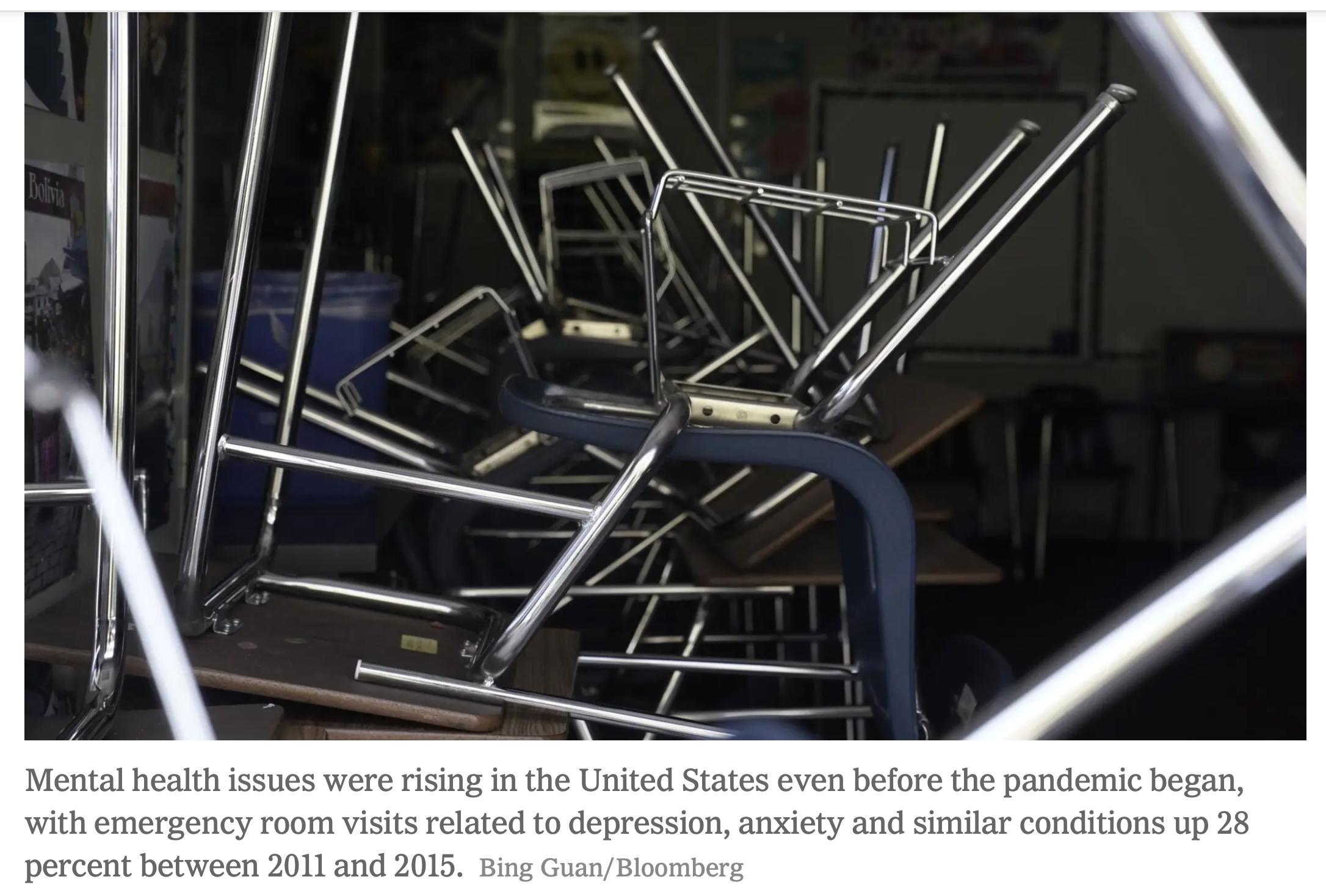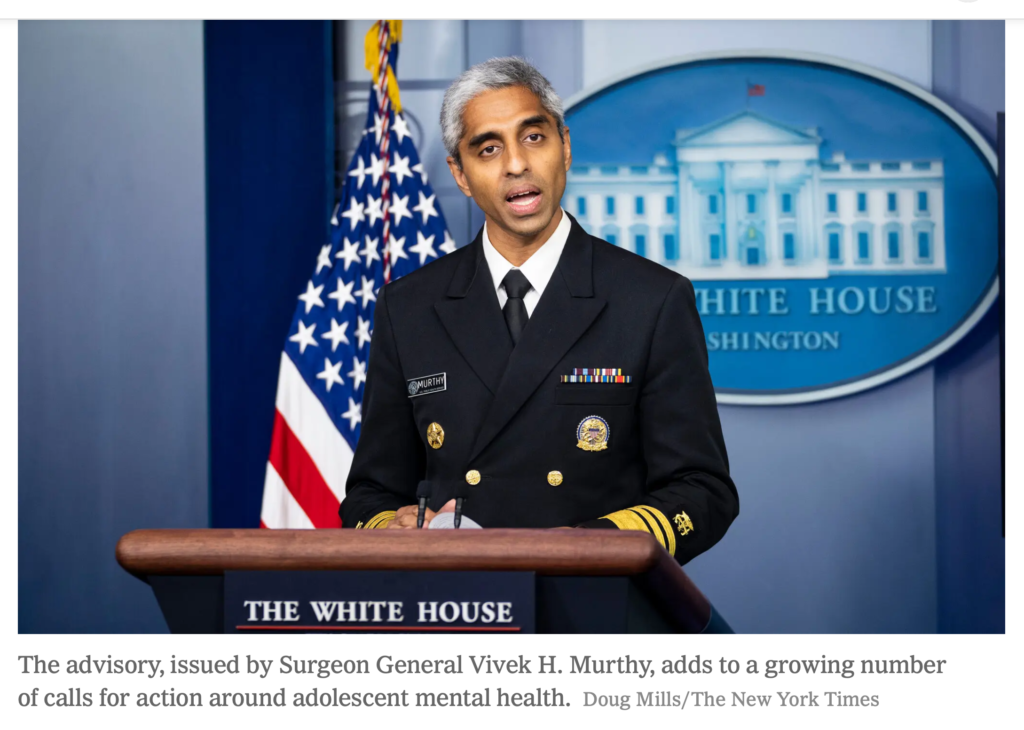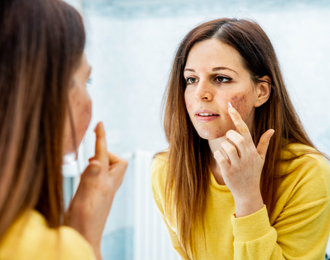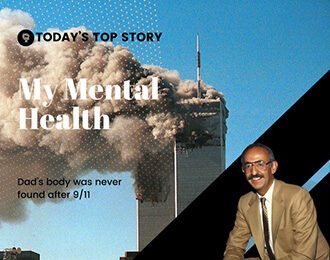Surgeon General Warns of Youth Mental Health Crisis

New York Times by Matt Richtel December 7, 2021
The coronavirus pandemic intensified a rise in adolescent depression, anxiety and mental health distress that was underway before the spring of 2020
The United States surgeon general on Tuesday warned that young people are facing “devastating” mental health effects as a result of the challenges experienced by their generation, including the coronavirus pandemic.
The message came as part of a rare public advisory from the nation’s top physician, Dr. Vivek H. Murthy, in a 53-page report noting that the pandemic intensified mental health issues that were already widespread by the spring of 2020.
The report cited significant increases in self-reports of depression and anxiety along with more emergency room visits for mental health issues. In the United States, emergency room visits for suicide attempts rose 51 percent for adolescent girls in early 2021 as compared to the same period in 2019. The figure rose 4 percent for boys.
Globally, symptoms of anxiety and depression doubled during the pandemic, the report noted. But mental health issues were already on the rise in the United States, with emergency room visits related to depression, anxiety and similar conditions up 28 percent between 2011 and 2015.
The reasons are complex and not yet definitive. Adolescent brain chemistry and relationships with friends and family play a role, the report noted, as does a fast-paced media culture, which can leave some young minds feeling helpless.
“Young people are bombarded with messages through the media and popular culture that erode their sense of self-worth — telling them they are not good-looking enough, popular enough, smart enough or rich enough,” Dr. Murthy wrote in the report. “That comes as progress on legitimate, and distressing, issues like climate change, income inequality, racial injustice, the opioid epidemic and gun violence feels too slow.”
The surgeon general’s advisory adds to a growing number of calls for attention and action around adolescent mental health. In October, the American Academy of Pediatrics, the American Academy of Child and Adolescent Psychiatry and the Children’s Hospital Association joined to declare “a national emergency” in youth mental health.
Although blame for adolescent distress is often pinned on social media, screen time alone does not account for the crisis, many researchers say. Rather, social media and other online activities act more to amplify an adolescent’s existing mental state, causing some young people to feel more distress and others to experience enhanced feelings of connection.

Bonnie Nagel, a pediatric neuropsychologist at Oregon Health & Science University who treats and studies adolescents, said that online interactions appear not to satisfy core needs for connection. And recent research by her and her colleagues found that the feeling of loneliness is a key predictor for depression and suicidal ideation.
“I don’t think it is genuine human connection when talking to somebody with a fake facade online,” Dr. Nagel said.
Moreover, screen time may be displacing activities known to be vital to physical and mental health, including sleep, exercise and in-person activity, research shows. The current generation of adolescents express heightened levels of loneliness — more than any other age group — despite spending countless hours connected over media.
Authorities and scientists widely acknowledge that there has been insufficient research into the underlying causes.
“There’s a real dearth of scientists in this area just as there is a real dearth of clinicians,” said Dr. Joshua Gordon, director of the National Institute of Mental Health, in a recent interview. “Parents can’t get care for their kids.”
Across the country in a variety of settings — rural and urban, richer and poorer — there is a shortage of specialists who can assess conditions such as attention deficit hyperactivity disorder, anxiety, depression and eating disorders. In May, Children’s Hospital Colorado declared its first ever state of emergency for pediatric mental health, citing emergency rooms “flooded” with young people struggling with suicidal ideation and other issues.
Researchers have hypothesized that the pandemic intensified stress on young people, in part by isolating them during a period of their lives when social connection is vital for healthy development. But the pandemic does not tell the full story. In 2019, a group of U.S. lawmakers issued a report, “Ring the Alarm,” focusing on a suicide crisis among Black adolescents, a group that historically has seen relatively low rates of suicide.
Some statistics, like the increase in suicides and emergency room visits, are stark and undeniable. But accurately measuring the scale of the mental health threat faced by young people and adults, scientists say, is made difficult by the fact that such issues are more openly discussed and assessed than in the past. An increase in self-reports of depression and anxiety may be a reliable indicator of the crisis, or it may be that earlier generations also felt distressed but lacked the popular language to describe their emotions.
“The question is whether it’s new or we’re medicalizing it,” Dr. Gordon said. “Those are the kinds of answers it’s really, really hard to get.”
Dr. Murthy’s advisory calls for more resources to be devoted to understanding and addressing mental health challenges, and it urges a greater appreciation of mental health as a key factor in overall health. “This is a moment to demand change,” the report concludes.
Tips for Parents to Help Their Struggling Teens
Are you concerned for your teen? If you worry that your teen might be experiencing depression or suicidal thoughts, there are a few things you can do to help. Dr. Christine Moutier, the chief medical officer of the American Foundation for Suicide Prevention, suggests these steps:
Look for changes. Notice shifts in sleeping and eating habits in your teen, as well as any issues he or she might be having at school, such as slipping grades. Watch for angry outbursts, mood swings and a loss of interest in activities they used to love. Stay attuned to their social media posts as well.
Keep the lines of communication open. If you notice something unusual, start a conversation. But your child might not want to talk. In that case, offer him or her help in finding a trusted person to share their struggles with instead.
Seek out professional support. A child who expresses suicidal thoughts may benefit from a mental health evaluation and treatment. You can start by speaking with your child’s pediatrician or a mental health professional.
In an emergency: If you have immediate concern for your child’s safety, do not leave him or her alone. Call a suicide prevention lifeline. Lock up any potentially lethal objects. Children who are actively trying to harm themselves should be taken to the closest emergency room.
Resources If you’re worried about someone in your life and don’t know how to help, these resources can offer guidance:1. The National Suicide Prevention Lifeline: 1-800-273-8255 (TALK) 2. The Crisis Text Line: Text TALK to 741741 3. The American Foundation for Suicide Prevention





